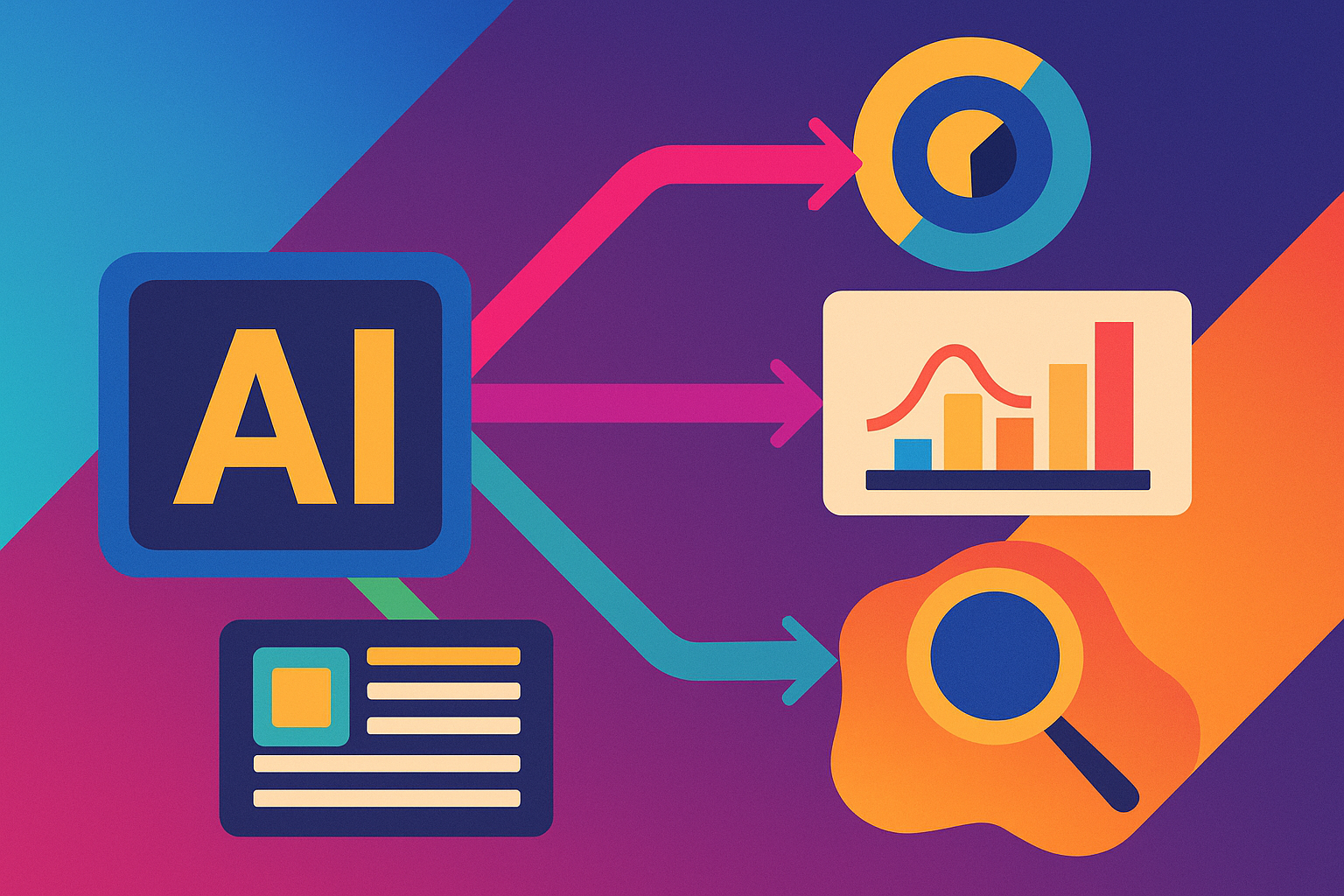In the ever-evolving landscape of digital marketing, the power of data cannot be overstated. Analytics play a crucial role in inbound marketing, enabling businesses to make informed, data-driven decisions that enhance their strategies and drive better results. At Theia Media Agency, we focus on providing insightful, relatable, and helpful marketing tips to business owners. This comprehensive guide will delve into the role of analytics in inbound marketing and how you can leverage data to optimize your campaigns, improve customer engagement, and achieve your business goals.
Why Analytics Matter in Inbound Marketing
1. Understanding Your Audience
Analytics provide detailed insights into who your audience is, what they need, and how they interact with your content. This understanding is fundamental to creating targeted and effective marketing strategies.
Benefits:
- Demographic Data: Learn about your audience’s age, gender, location, and interests.
- Behavioral Insights: Understand how users navigate your website, what content they engage with, and their conversion paths.
Example: A Sarasota-based retail store can use Google Analytics to track website visitors' demographics and behavior. By understanding that a significant portion of their audience is young professionals interested in eco-friendly products, they can tailor their content and product offerings to better meet this segment’s needs.
2. Improving Customer Engagement
By analyzing user behavior, you can identify which content resonates most with your audience and tailor your strategies accordingly. This leads to higher engagement rates and a more loyal customer base.
Benefits:
- Content Performance: Track which blog posts, videos, or social media posts are most popular.
- Engagement Metrics: Measure time on page, bounce rates, and social shares to gauge content effectiveness.
Example: A Sarasota fitness center might discover that their blog posts on home workouts receive the most traffic and engagement. This insight can guide them to create more content around home fitness, thus increasing overall engagement.
3. Optimizing Marketing Campaigns
Analytics help you monitor the performance of your marketing campaigns in real-time. This allows you to make adjustments on the fly, ensuring that your campaigns are always optimized for the best results.
Benefits:
- Real-Time Monitoring: Track key performance indicators (KPIs) such as click-through rates (CTR), conversion rates, and return on investment (ROI).
- A/B Testing: Conduct tests to determine which variations of your campaigns perform best.
Example: A Sarasota-based travel agency can use A/B testing in their email marketing campaigns to compare different subject lines and content formats. By analyzing the results, they can determine which approach generates higher open and conversion rates, optimizing future campaigns for better performance.
4. Enhancing Customer Experience
Data analytics can reveal pain points in the customer journey, allowing you to make necessary improvements that enhance the overall customer experience.
Benefits:
- Journey Mapping: Visualize the customer journey to identify drop-off points and areas for improvement.
- Feedback Analysis: Collect and analyze customer feedback to make data-driven improvements.
Example: A Sarasota restaurant can use analytics to track online reservation data and customer feedback. If they notice a high drop-off rate during the booking process, they can investigate and streamline the reservation system to improve the customer experience.
5. Driving Data-Driven Decisions
Analytics provide a solid foundation for making informed decisions. By relying on data rather than intuition, you can ensure that your marketing strategies are effective and aligned with your business goals.
Benefits:
- Strategic Planning: Use data to set realistic goals and measure progress.
- Resource Allocation: Allocate resources more efficiently based on performance data.
Example: A Sarasota-based e-commerce store can analyze sales data to identify the most profitable products and customer segments. This information can guide their marketing budget allocation, ensuring they invest in the most effective channels and campaigns.
Key Analytics Tools for Inbound Marketing
1. Google Analytics
Google Analytics is a powerful tool that provides comprehensive data on website traffic, user behavior, and conversion tracking. It’s essential for understanding how visitors interact with your site and identifying opportunities for improvement.
Key Features:
- Audience Reports: Get detailed insights into your audience demographics and interests.
- Behavior Reports: Analyze how users navigate your site and which content they engage with.
- Conversion Tracking: Measure the effectiveness of your marketing campaigns in driving conversions.
2. Google Search Console
Google Search Console helps you monitor your website’s presence in Google search results. It provides valuable data on search queries, backlinks, and website performance.
Key Features:
- Search Analytics: Track which queries bring users to your site and analyze click-through rates.
- Index Coverage: Identify and fix issues that affect your site’s indexing and visibility.
- Mobile Usability: Ensure your site is mobile-friendly and provides a good user experience on all devices.
3. HubSpot
HubSpot offers a suite of tools for inbound marketing, including analytics for tracking website traffic, lead generation, and email marketing performance.
Key Features:
- Traffic Analytics: Monitor overall website traffic and identify top-performing pages.
- Lead Tracking: Track leads through the customer journey and analyze conversion paths.
- Email Analytics: Measure the performance of your email campaigns, including open rates, click-through rates, and conversions.
4. SEMrush
SEMrush is an all-in-one marketing toolkit that provides insights into SEO, paid search, and content marketing performance.
Key Features:
- SEO Audit: Conduct a comprehensive audit of your website’s SEO performance.
- Keyword Research: Identify high-potential keywords to target in your content.
- Competitor Analysis: Analyze your competitors’ strategies and identify opportunities to outperform them.
5. Social Media Analytics Tools
Tools like Hootsuite, Sprout Social, and Buffer provide analytics for social media platforms, helping you track engagement, reach, and audience growth.
Key Features:
- Engagement Metrics: Monitor likes, shares, comments, and overall engagement.
- Audience Insights: Understand the demographics and interests of your social media followers.
- Content Performance: Analyze which types of content perform best on each platform.
Practical Steps to Implement Analytics in Your Inbound Marketing Strategy
1. Set Clear Goals and KPIs
Define what you want to achieve with your marketing efforts and identify the key performance indicators (KPIs) that will help you measure success.
Tips for Success:
- Specific Goals: Set specific, measurable, achievable, relevant, and time-bound (SMART) goals.
- Relevant KPIs: Choose KPIs that align with your business objectives and marketing goals.
Example: A Sarasota-based tech startup might set a goal to increase website traffic by 20% in the next six months. Relevant KPIs could include the number of unique visitors, average session duration, and bounce rate.
2. Implement Tracking Codes
Use tracking codes and tags to collect data on user behavior and campaign performance. Tools like Google Tag Manager can simplify this process.
Tips for Success:
- Universal Tracking: Ensure tracking codes are implemented across all relevant pages and platforms.
- Event Tracking: Track specific actions like form submissions, video plays, and button clicks.
Example: A Sarasota event planning company could use Google Tag Manager to track when users download event brochures or submit contact forms, providing insights into lead generation effectiveness.
3. Analyze and Interpret Data
Regularly review your analytics data to identify trends, patterns, and insights. Use this information to make informed decisions and optimize your marketing strategies.
Tips for Success:
- Regular Reports: Generate weekly or monthly reports to monitor progress and identify areas for improvement.
- Data Visualization: Use charts and graphs to visualize data and make it easier to interpret.
Example: A Sarasota-based online bookstore might analyze sales data to identify peak shopping times and popular book genres. This information can guide inventory management and marketing efforts.
4. Optimize and Test
Use data insights to optimize your marketing campaigns and conduct A/B testing to determine the most effective strategies.
Tips for Success:
- Continuous Improvement: Regularly refine your strategies based on data insights and performance metrics.
- Experimentation: Test different variations of your campaigns to identify what works best.
Example: A Sarasota beauty salon could test different promotional offers in their email marketing campaigns. By analyzing which offers generate the highest click-through and conversion rates, they can optimize future campaigns.
5. Leverage Automation
Use marketing automation tools to streamline data collection, analysis, and campaign execution. Automation can save time and ensure that your marketing efforts are consistently data-driven.
Tips for Success:
- Automated Reports: Set up automated reports to receive regular updates on key metrics.
- Campaign Automation: Use tools like HubSpot or Mailchimp to automate email marketing and lead nurturing campaigns.
Example: A Sarasota-based nonprofit organization could use HubSpot to automate their donor outreach campaigns. By setting up automated email sequences based on donor behavior, they can ensure timely and personalized communication.
Conclusion
Analytics are the backbone of successful inbound marketing strategies. By leveraging data, businesses can gain valuable insights into their audience, optimize their marketing efforts, and make informed decisions that drive better results. At Theia Media Agency, we are dedicated to helping businesses harness the power of analytics to enhance their marketing strategies and achieve their goals. Embrace data-driven decision-making today and watch your marketing efforts soar to new heights. Happy analyzing!









